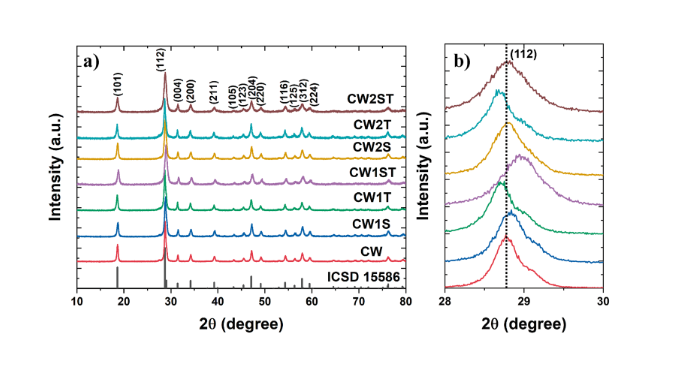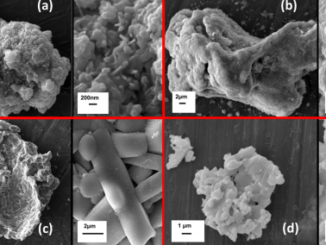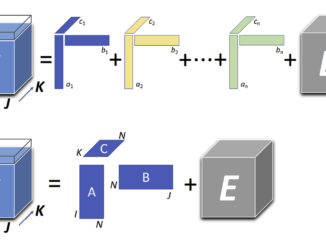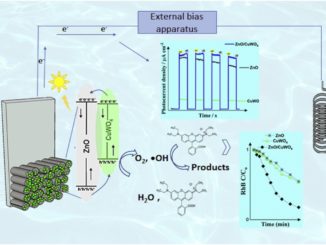
Photoluminescent properties of Sm3+ and Tb3+ codoped CaWO4 nanoparticles obtained by a one-step sonochemical method
Abstract: Luminescent materials with LED applications can have your emission color controlled by rare earth doping. In this work, Sm3+- and Tb3+-codoped CaWO4 nanoparticles were obtained by a one-step sonochemical method. The nanoparticles were characterized by X-ray diffractogram (XRD), Raman scattering (RS) spectroscopy, The Fourier transform infrared (FTIR) spectroscopy, scanning electron microscopy (SEM), transmission electron microscopy (TEM), and visible ultraviolet spectroscopy (UV–Vis). The photoluminescent measurements were taken at room and lower temperatures for analysis of doping in emission color. The diffractograms indicate the single-phase CaWO4 with the scheelite structure and it was observed a reduction in the crystallite size as the doping. SEM and TEM images indicate the formation of nanospheres for pure and samarium-doped samples, while terbium doping results in the formation of nanorods. Room temperature photoluminescence spectra indicate a blue emission for the bare and samarium-doped CaWO4, while terbium doping emits at the green color. The codoping mixes the colors blue, green, and orange, indicating a potential material with white color emission.
Author(s): Andrade Neto, N. F.; Silva, J. M. P.; Tranquilin, R. L.; Longo, E.; Domenegueti, J. F. M.; Bomio, M. R. D.; Motta, F. V.
Journal of Materials Science: Materials in Electronics
Published: 06 July 2020
DOI: https://doi.org/10.1007/s10854-020-03878-7
CDMF
The CDMF, hosted at the Federal University of São Carlos (UFSCar), is one of the Research, Innovation and Dissemination Centers (RIDC) supported by the São Paulo State Research Support Foundation (Fapesp), and also receives investment from the National Council Scientific and Technological Development (CNPq), from the National Institute of Science and Technology of Materials in Nanotechnology (INCTMN).




